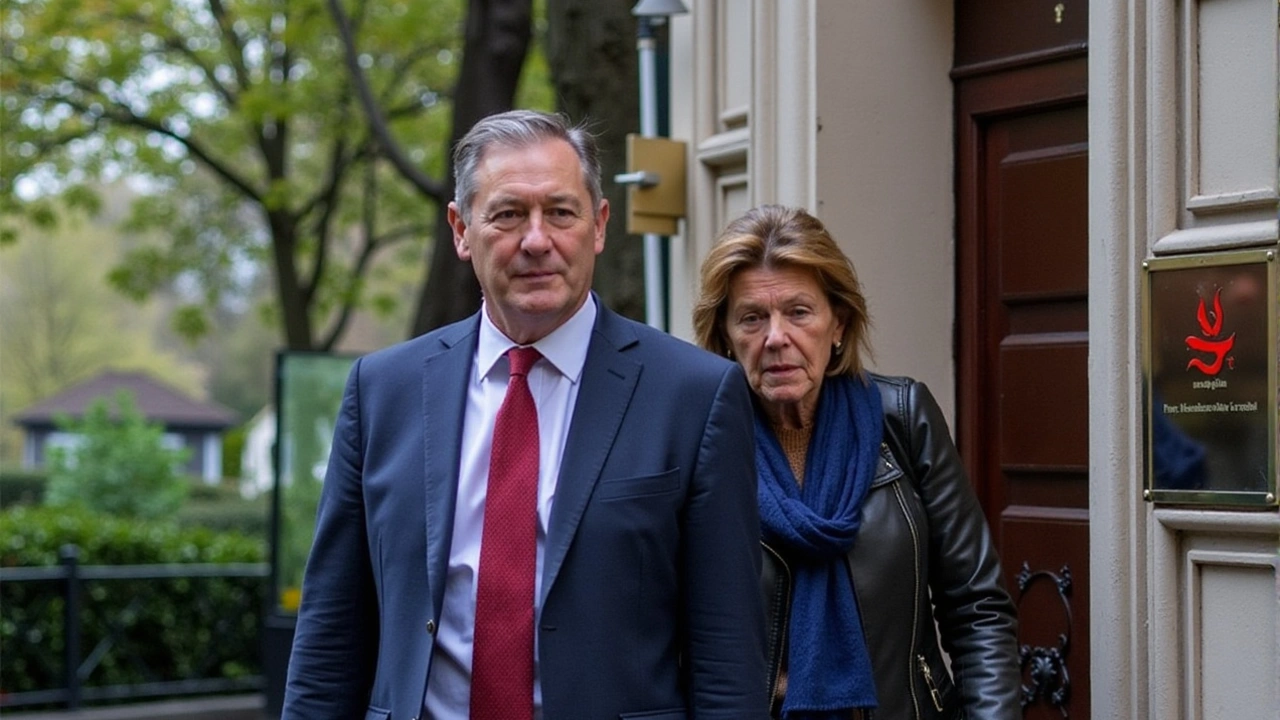Starmer's Challenge at No.10: Navigating the Political Landscape
Keir Starmer, the UK's Prime Minister, is at a crossroads as his leadership faces critical tests. The challenges come at a sensitive time, marked by the notable departure of Sue Gray, his chief of staff, a decision that underscores the political tension simmering within the government. Gray's resignation comes amid swirling controversies involving political favoritism in civil service appointments, murmurings of discontent from special advisers, and ministers allegedly accepting gifts from donors and lobbyists. These multifaceted issues paint a picture of a government in turmoil, struggling to maintain cohesion and control.
The Departure of Sue Gray: A Significant Setback
The resignation of Sue Gray as chief of staff represents a potential turning point for Starmer's administration. Gray's exit is not just a personnel change; it signifies a deeper unraveling of trusted structures within Downing Street. Gray was more than just an aide; she acted as a critical anchor, stabilizing Starmer's inner circle amidst political storms. Her departure therefore sends ripples through No.10, raising questions about loyalty, strategic alignment, and the management of emerging political factions.
Reforming the Cabinet Office: Streamlining for Efficiency
A pivotal area requiring transformation is the Cabinet Office. Recent analyses suggest that its extensive roster of functions has diluted its core mission, complicating its mandate to support the Prime Minister effectively. The sprawling nature of its responsibilities has led to overlaps and inefficiencies, often blurring the lines of power and decision-making. One proposition includes trimming the Office down to its essential duties, thereby prioritizing the support needed by the Prime Minister and aligning collective government objectives.
Strengthening No.10: Building a Resilient Administration
For Starmer to salvage the operational stability of No.10, bolstering its analytical and economic frameworks is instrumental. By infusing external expertise into his team, Starmer hopes to enhance strategic depth and decisiveness in policy and delivery. Key appointments, particularly the selection of a new cabinet secretary and principal private secretary, are necessary. Their capability to mesh with Starmer's agenda will be crucial in ensuring that government priorities resonate through the halls of Whitehall, demanding candidates who bring not just experience but also an ability to provide invaluable strategic counsel.

Implementing Strategic Appointments
Succeeding Simon Case, the current cabinet secretary slated to leave in January, involves more than just filling a vacancy. The role is central to disseminating the Prime Minister’s policies across Whitehall. An open recruitment process will be needed to appoint individuals with the right mix of insight, receptiveness, and strategic foresight. This initiative should aim to restore vibrancy and efficacy to the office's operational hierarchy, yielding an administration that is not only more responsive but also highly disciplined and aligned with No.10’s strategic aims.
A New Approach to Communication and Leaks
A pressing priority for Starmer is to tackle the persistent issue of leaks and improve the government's reactive communication strategies. Leaks have become a recurrent headache, not just damaging in the immediate sense but also eroding confidence in the administration's inner workings. Implementing a stringent zero-tolerance policy against unauthorized disclosures is imperative. Furthermore, the communications team needs to be more proactive in crisis management, quickly identifying narrative weaknesses while crafting effective, on-the-fly responses to limit potential fallout from adverse media stories.
Starmer's Vision: Uniting Objectives with Practical Governance
Despite these challenges, Starmer’s reset represents a remarkable opportunity to refresh the execution of governance under his leadership. Central to this vision is the articulation of clear government priorities, metrics for success, and the precise strategic trade-offs required to achieve these goals. His administration aims to develop a comprehensive framework of priorities, keeping the governmental machinery focused and purpose-driven. This must involve a rigorous selection of objectives that are aligned with the public interest, forged through disciplined trade-offs, and pursued with steadfast resolve.
A Path Forward: Cultivating a Cohesive Government Framework
To not simply manage but thrive amidst the current political trials, Starmer's administration must cultivate an internal climate of unity and discipline within No.10’s strategic team. By addressing the immediate structural and personnel needs, instituting essential reforms, and improving communication protocols, Starmer seeks not only to stabilize but to elevate government performance. This strategic overhaul aims to fortify the administration’s integrity and operational foresight, thus ensuring long-term success. His actions will ultimately define the model for leadership that Keir Starmer envisions for the future of his premiership, advocating for a strong, coherent government that can withstand the tests of political volatility and public scrutiny.





